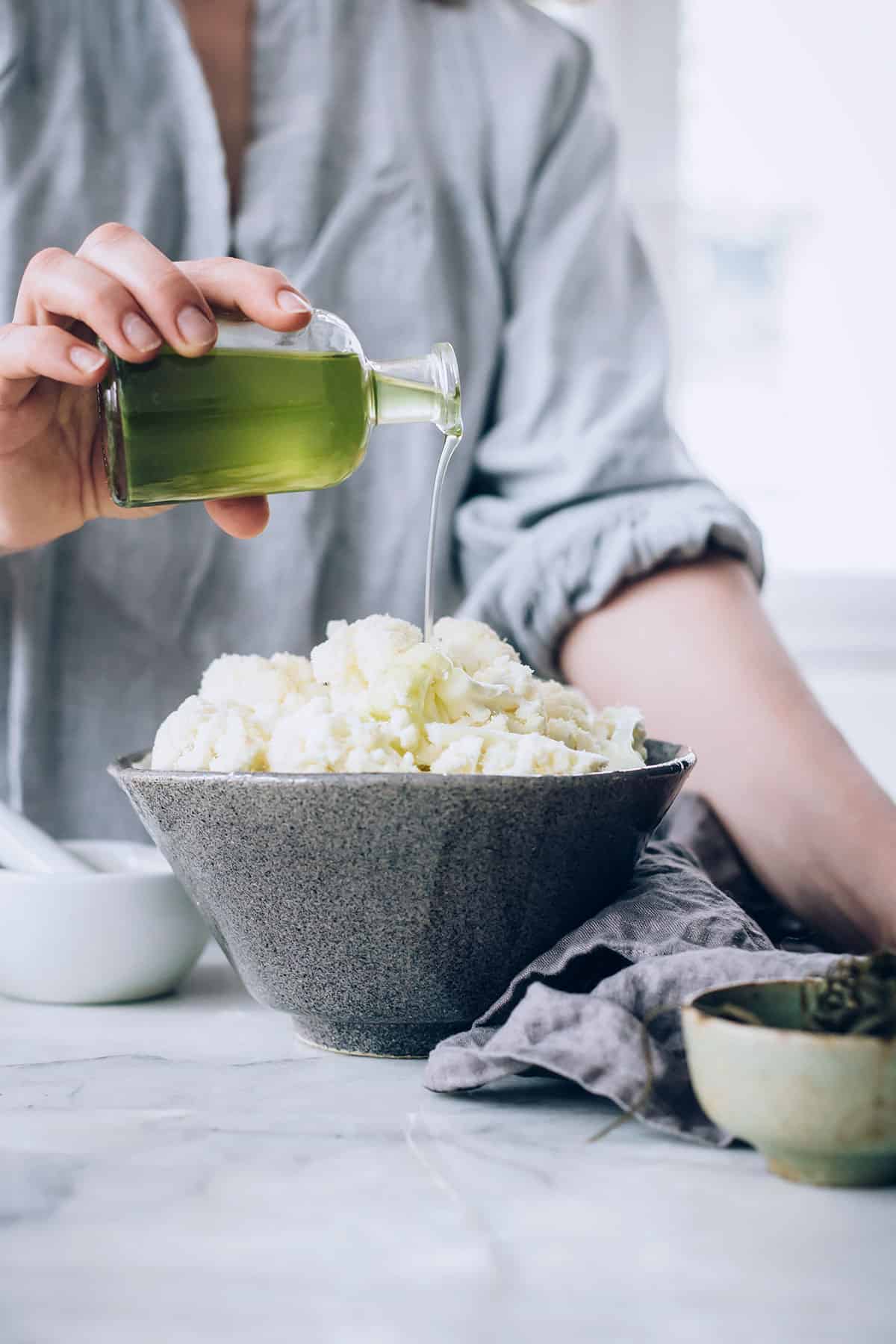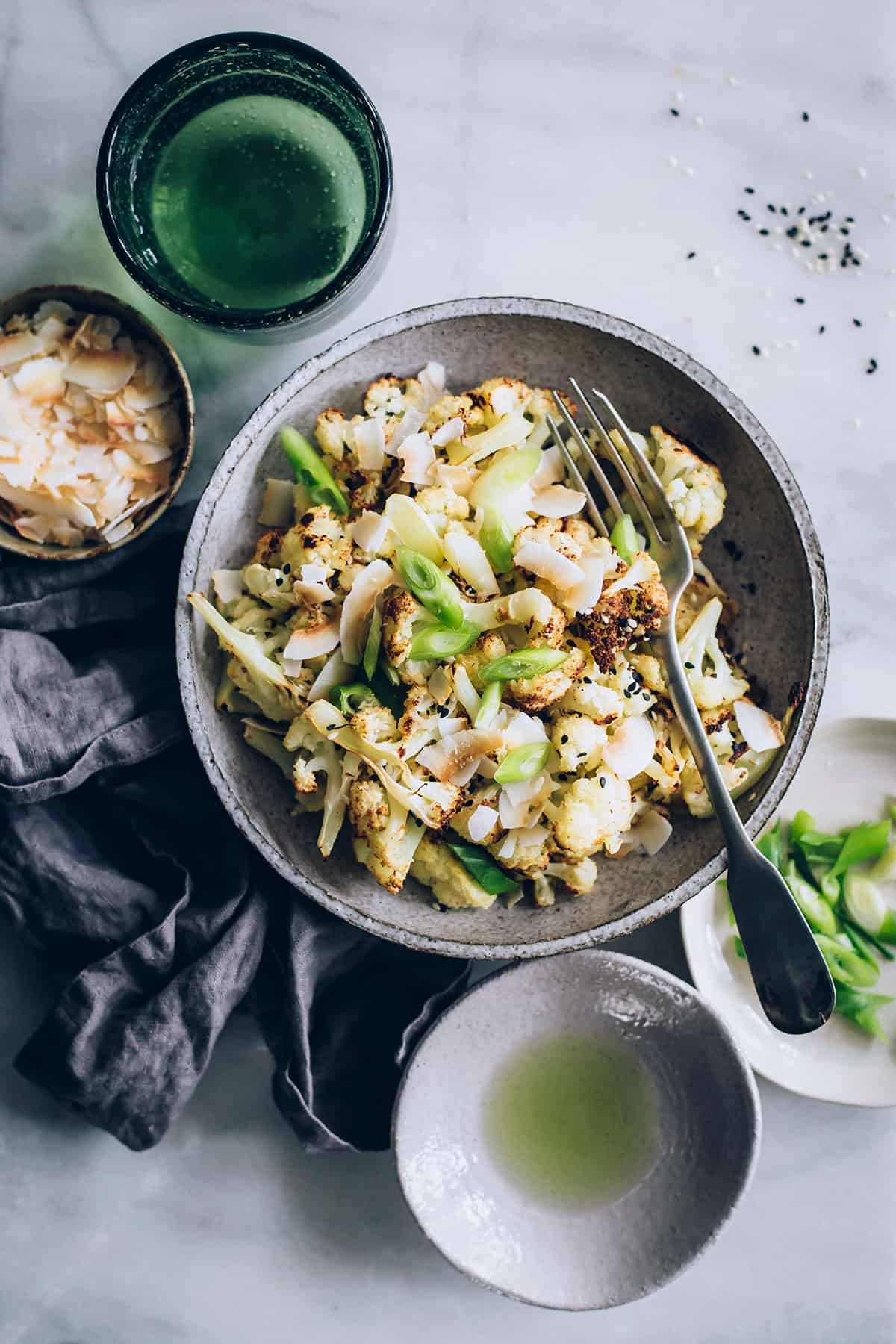Algae oil is hitting the culinary scene as a heart-healthy and eco-friendly alternative to other cooking oils like canola. If you see French fries cooked in algae oil on the menu at your trendy neighborhood café, don’t worry – they won’t taste like fish! Algae oil is a great addition to your cooking repertoire, as its neutral taste and heat stable qualities are perfect for all your culinary adventures. If you’re intrigued, stick around for everything you need to know about algae oil, plus a recipe for a delicious veggie side dish.

What is algae oil?
It’s an oil with an excellent fatty acid profile. It is high in monounsaturated fats which are good fats that you get from Mediterranean foods like olive oil, almonds and avocados. Algae oil comes out on top with the highest level of monounsaturated fat and lowest level of saturated fat than any other cooking oil.
Algae oil is also a good source of docosahexaenoic acid (DHA), an omega-3 fatty acid that your body needs for optimal brain function and heart health. EPA and DHA are essential omega-3 fatty acids that are abundant in cold-water fish. But where do the fish get these omega-3s? From eating algae! Therefore, algae oil s a great option for vegans to get their DHA straight from the source.
How is algae oil made?
Algae oil can be produced either from marine algae or vegan sources. Thrive Culinary Algae Oil, one of the main suppliers of bottled algae oil, sources their algae from the sap of a chestnut tree. Algae is grown in fermenters where they feed on plant sugars. The algae biomass is gathered after fermenting and expeller pressed to release the oil. The leftover pressed algae can be used for renewable energy for minimal waste. Producing algae oil has a low carbon and water footprint, making it a very sustainable choice for cooking oil.

What are some algae oil uses?
Because algae oil is 90% monounsaturated fat, which is very heat stable, it has a high smoke point (the temperature at which an oil starts to burn and fats oxidize), up to 485ºF, so it is suitable for high-heat cooking such as roasting, sautéing, stir frying and searing. It has a light, neutral flavor (no fishy taste or smell!) so it’s also great for using in sauces, marinades, salad dressings, etc.
If you’re up for trying algae oil, get your feet wet by making the coconut roasted cauliflower recipe below!


Coconut Roasted Cauliflower with Algae Oil
This coconut roasted cauliflower is loaded with omega-3 fatty acids and beauty-boosting vitamins and minerals.
Ingredients
- 2 pounds cauliflower florets
- 2 teaspoons algae oil
- 1/4 teaspoon sea salt
- 3 tablespoons tamari
- 1 tablespoon sweet white or yellow miso paste
- 1 tablespoon toasted sesame oil
- 2 tablespoons maple syrup
- 1/4 cup unsweetened coconut flakes
- Optional for serving: sesame seeds red chili flakes and thinly sliced green onions
Instructions
-
Preheat oven to 415ºF.
-
In a large mixing bowl, toss together cauliflower, algae oil and salt.
-
In a small mixing bowl, whisk together tamari, miso, sesame oil and maple syrup. Pour mixture into a shallow baking dish.
-
Spread cauliflower in an even layer in the baking dish. Roasted for 25-35 minutes, or until florets are fork tender and golden on the edges.
-
While cauliflower is roasting, heat a small skillet to medium low heat. Add coconut and cook, stirring constantly, until you start to see some golden brown pieces. Turn off heat and continue to stir. When around half of the flakes are golden brown, remove pan from the stove and continue stirring another 1-2 minutes. Let cool.
-
When cauliflower comes out of the oven, toss with toasted coconut flakes.
-
Optional: serve with sesame seeds, red chili flakes and thinly sliced green onions.
Recipe Notes
Because algae oil is 90% monounsaturated fat, which is very heat stable, it has a high smoke point (the temperature at which an oil starts to burn and fats oxidize), up to 485ºF, so it is suitable for high-heat cooking such as roasting, sautéing, stir frying and searing. It has a light, neutral flavor (no fishy taste or smell!) so it’s also great for using in sauces, marinades, salad dressings, etc.
Store any leftover cauliflower in the refrigerator for up to 4 days.